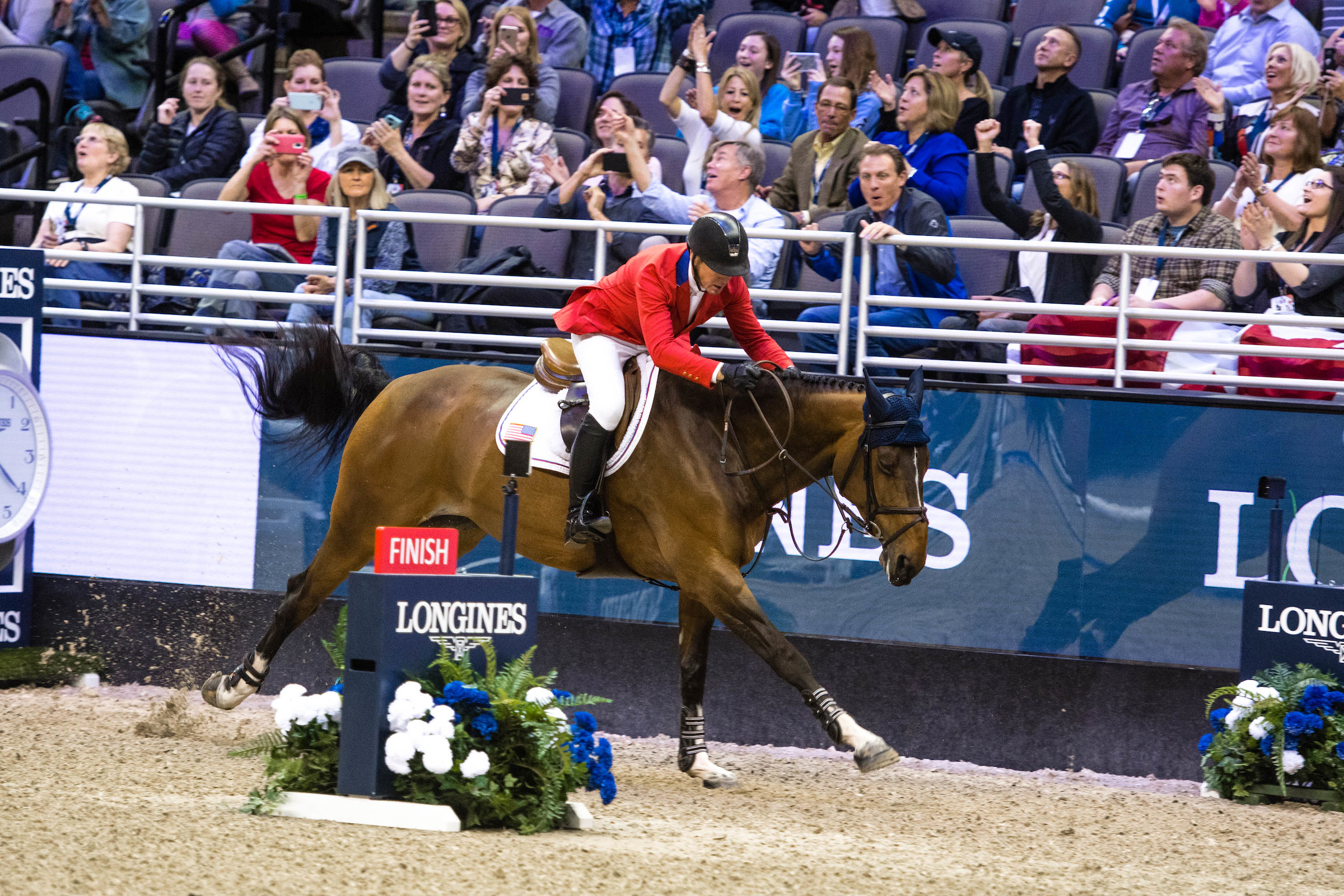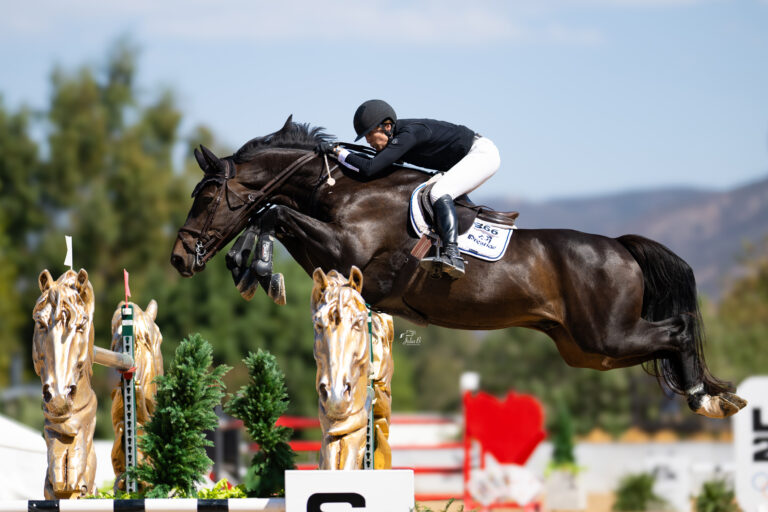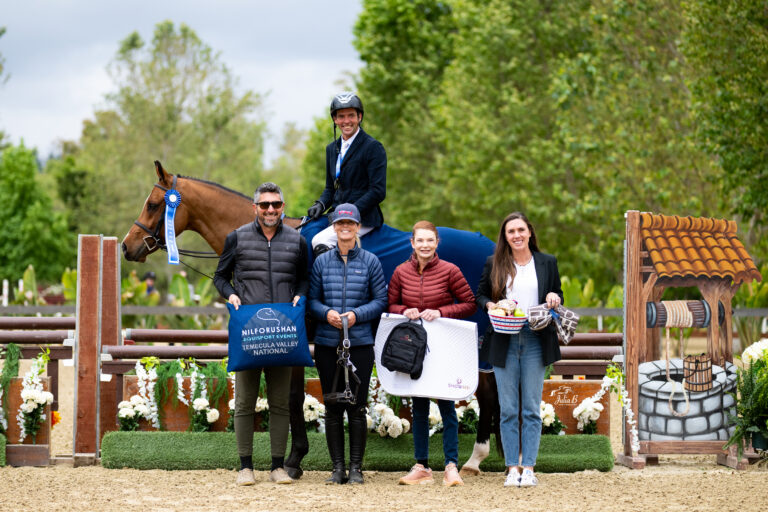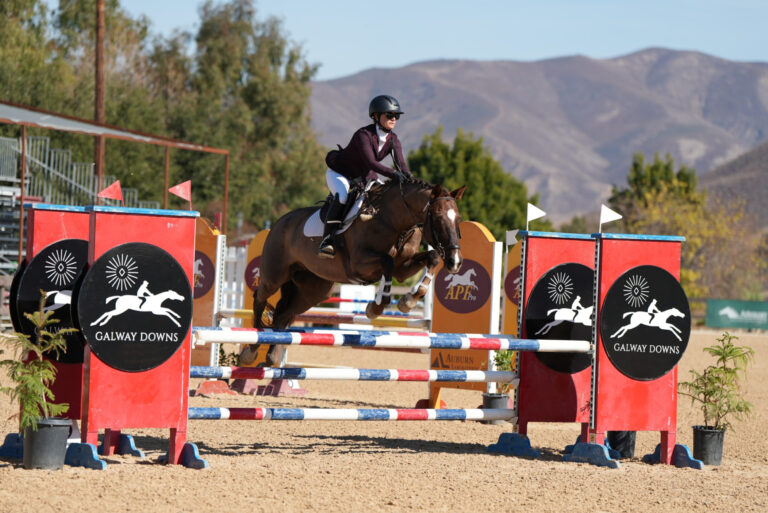April 13, 2107—As any parents who have volunteered to time their kid in a swim meet or foot race can attest, timekeeping in a competitive context can be nerve-wracking. “Where’s the second hand?” “What button do I push?” and “Oops! I erased that!” are frequent laments from parental “officials.”
As you would expect, there was none of that from the professionals manning the Longines command center at the CenturyLink Center in Omaha, Nebraska, as U.S. rider McLain Ward galloped through the timers to capture the Longines FEI World Cup™ Jumping Final earlier this month. Though there was big-time prize money at stake, nearly 30,000 spectators in the house throughout the week for jumping competitions and thousands more watching from around the world, the Longines crew was cool, calm and collected.

Longines, after all, has been at this for a while.
The Swiss company’s history with equestrian sports dates back to 1878 and its winged-hourglass logo is engraved on timekeeping traditions and innovations in many other fields of sport, mostly notable World Cup and other international levels of downhill and slalom ski racing.
In Omaha, a team of six to eight Longines technicians arrived three days before the competition with three-and-a-half tons of equipment in tow. Unlike their ski race counterparts who have to lay cable under the track because of unreliable wireless internet, technicians at the Longines FEI World Cup™ Jumping Final don’t thanks to wireless transmission of their data. But they still have two kilometers (more than 6,500 feet) of cable to haul in to ensure that the split seconds they track are projected to fans in the stands and on screens across the globe.
Back in the early days of jumping, a thin white cotton tape was stretched between standards at the course’s start and finish lines to trigger and stop the timers. When one horse foiled the system by jumping over the tape at the start line, harder-to-see black tape was swapped in.
Advances since then have been much more sophisticated.
The use of photoelectric cells, which involved electricity produced by a light beam, to record start and finish was introduced on an experimental basis in 1937 during the Skiing World Championships in Chamonix, France. The technology’s ability to control the time automatically, versus manually, led to greatly increased precision and reliability and it became the standard in other sports.
In the 1970s, an infrared beam emitter and receptor system replaced the photoelectric cells and continues to deliver a very precise version of what used to be called “wire cutting.” Start and finish times and every ticking 1000 of a second in between were transmitted from the arena floor to the Longines crew and their four computers. There, it is sliced and diced multiple ways for the benefit of exhibitors and spectators alike.
Ticking fractions of a second displayed on the CenturyLink Arena’s jumbotron brought fans to the edges of their seats as a favorite’s first-round time was compared to the course’s time allowed. Or in the jump-off, split times let fans follow where the current horse and rider were compared to the leaders near the midpoint point on the track. Who cut that corner the closest? How did that left-out stride translate to the clock? Whose gallop is the fastest on that long run to the last jump?
Longines’ timers tell all.
Longines sees equestrian sport as a perfect fit for its brand. The sports it aligns with reflect the brand’s core values: elegance, tradition and performance. Skiing, equestrian, tennis and gymnastics all embrace both genders and appeal to a large audience. Further, Longines can pair its sponsorship with providing the critical service of timekeeping and data tracking, a benefit to both exhibitors and fans. It’s a non-intrusive way to keep its logo in front of mass audiences following the competition, whether they are watching from the slopes or the arena or on TV in the comfort of their living rooms.
Longines’ innovations in jumping timing for the last few years have been largely behind-the-scenes, involving faster transmission and dispersal of information. Going forward, however, significant advances designed for skiing could have interesting applications for all concerned.
In February of this year, Longines officially unveiled its Live Alpine Data system during the FIS Alpine World Ski Championships in St. Moritz, Switzerland. A chip attached to the skier’s boot is equipped with radar and a motion sensor. This enables real-time and continuous measurement of the athlete’s speed, acceleration and deceleration, the time it takes to reach a speed of 100 kilometers (about 62 miles) per hour and an analysis of the jumps. The data was presented in a TV graphic for live spectators and viewers at home. A second phase will enable athletes to use the data to more precisely evaluate their performances.
Because skiing and jumping are both about constantly pushing the edges of speed and control, Longines’ latest advance seems a logical next step for the jumping arena.
In the meantime, the coveted Longines chronographs were awarded to McLain, Romain Duguet and Henrik von Eckermann, the three finalists of the Longines FEI World Cup™ Jumping Final. But you don’t have to be a World Cup winner to enjoy a Longines watch. In fact, the Longines’ Conquest Jumping edition was designed in collaboration with the FEI specifically for riders and fans.
Introduced two years ago, the Conquest Jumping watch enables timing of a round to 1/100 of a second and can also convert penalties into time or add time faults, depending on whether the competition is judged under the FEI’s Table A or C rules.
It looks pretty nice, too!











